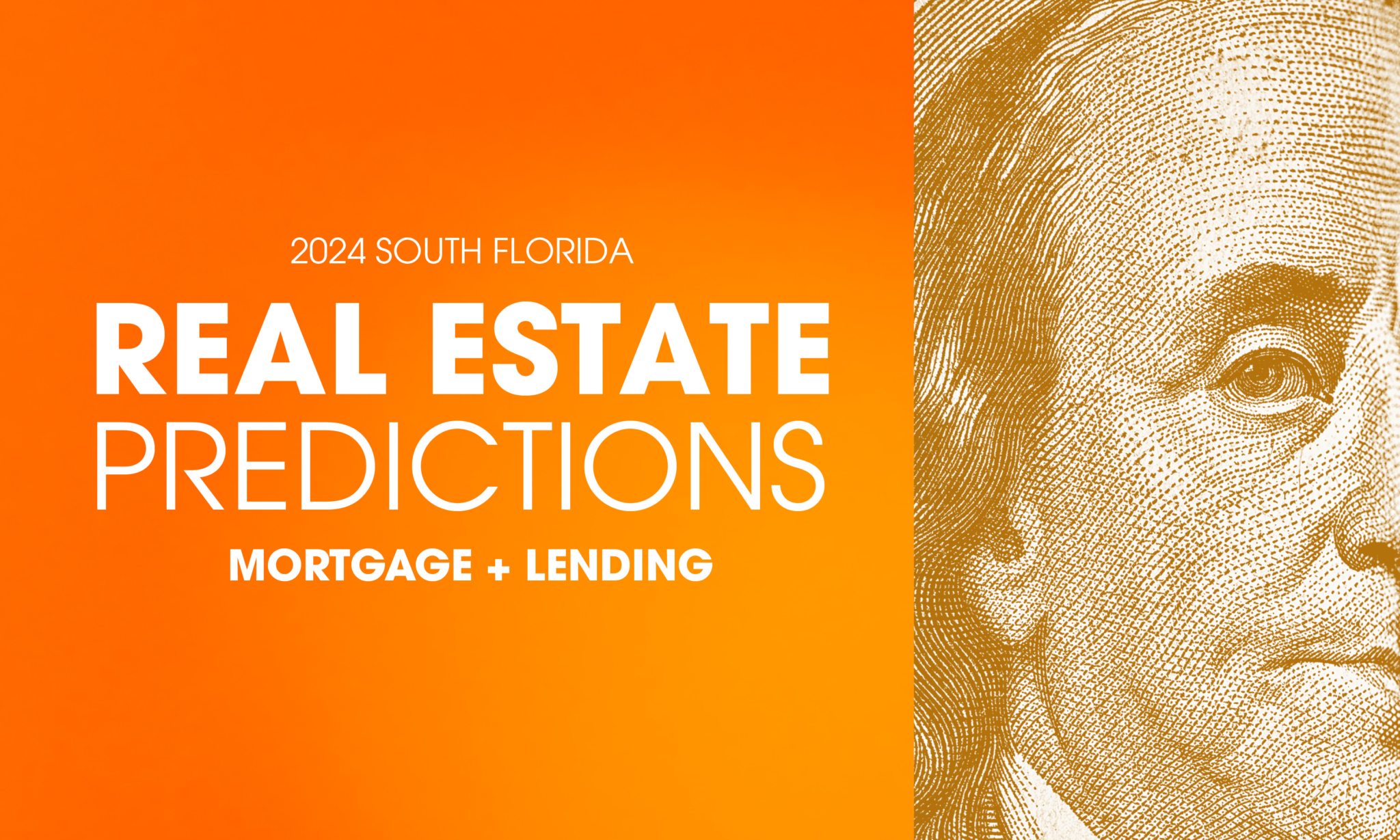Featuring the perspectives of local lending executives:
Jeremy Collette
Executive Director of Capital Markets, Guaranteed Rate
David Druey
Florida Regional President, Centennial Bank
What will happen with interest rates in 2024? When do you expect to see any changes?
David Druey: Interest rates are expected to remain steady for the first three quarters of 2024. Any potential changes, such as a rate drop, are more likely to occur after the elections, depending upon the level of polarization. This forecast for next year’s interest rates stems from the need to combat inflation. For inflation to cool, consumers need to reduce their spending, as it is — and has remained — relatively high, with people holding substantial credit balances and depleting their savings and credit cards.
Jeremy Collette: Right now, I don’t see much relief in sight from this high-interest-rate environment. Inflation is still much higher than the Fed’s 2% target, so, unfortunately, the “higher-for-longer” theme being telegraphed by Fed officials is likely here to stay. The Fed recently moved its Fed funds rate forecast to 5.1% from 4.6% by the end of 2024, so with mortgage rates currently near 8%, maybe they get to the mid-sevens. It’s just amazing how strong the employment market and the consumer is — both major headwinds for Fed rate cuts.
What will be the biggest challenges and opportunities for lenders in 2024?
Colette: Generally, the biggest challenge will be continuing to operate in an extended high-rate environment. I do think there are some very interesting opportunities for nonbank lenders that can fill some of the niches left by banks exiting the lending industry due to balance sheet issues or because of the new bank capital rules.
Druey: In 2024, banks and borrowers alike will likely continue to face challenges in an environment marked by rising insurance and interest rates. One of the primary hurdles for lenders is identifying viable, conservative opportunities that make financial sense for both the bank and the borrower. Lenders will likely employ a Debt Service Coverage Ratio (DSCR) strategy to balance increased expenses and interest rates, necessitating borrowers to inject more equity into projects than in the past.
Additionally, it will be crucial to ensure that lending doesn’t occur in markets experiencing overbuilding, where the number of units exceeds the absorption rate. This could easily lead to borrowers offering concessions on rental rates needed to offset vacancies to not default. Despite these challenges, opportunities will likely abound in the construction and adaptive reuse sectors. Lenders should approach these opportunities cautiously, employing a conservative underwriting approach that aligns with the current market conditions.
Aside from the traditional 30-year fixed-rate mortgage, which kinds of loans do you expect to be most popular for homebuyers in 2024?
Druey: Adjustable-rate mortgages (ARMs) and interest-only adjustable-rate mortgages (ARM) may gain popularity in 2024, as these loans can feel more palatable as economic conditions shift. For traditional ARMs, we anticipate homebuyers to seek a shorter loan term, such as one to three years, in hopes that rates will decrease and mortgages will adjust accordingly. Interest-only ARMs are attractive due to the lower monthly payment that results from paying only interest on the loan, not principal. For both, the borrower can sell the home or refinance at the end of the loan term.
Colette: Short-term rates being higher than long-term interest rates, the so-called “inverted yield curve,” make it very challenging to originate ARMs or other short-term fixed-rate loans. I do believe there are some opportunities in the equity extraction space for products like HELOCs and reverse mortgages. Down-payment assistance, non-QM, business-purpose loans and affordable product sectors should continue to grow.

